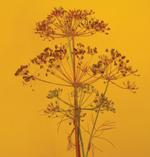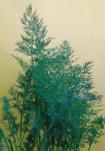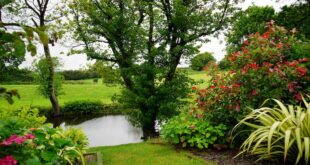So many edible plants sulk or refuse to grow in winter, but not dill (Anethum graveolens), an ancient herb that has been used historically both in cooking and as a medicine. This great culinary herb actually prefers wet weather to flourish. Dill originally came from a monsoon climate with wet summers and dry winters, In New Zealand, dill quickly goes to seed in summer but loves winter’s continual damp conditions.
So while many other herbs are sulking or underground in winter there is plenty of fresh, leafy dill to eat and enjoy over the wooler months.
 To grow dill, choose a sunny place in the herb or vegetable garden and soil that has been boosted with compost. Scatter seed within a 30cm square and cover lightly with fresh potting mix. It will germinate in about 10 days. As soon as the plant has three or four leaves it can be transplanted, allowing 15cm between plants. Make sure it stays moist until established. Another option is to buy and plant out a dill seedling.
To grow dill, choose a sunny place in the herb or vegetable garden and soil that has been boosted with compost. Scatter seed within a 30cm square and cover lightly with fresh potting mix. It will germinate in about 10 days. As soon as the plant has three or four leaves it can be transplanted, allowing 15cm between plants. Make sure it stays moist until established. Another option is to buy and plant out a dill seedling.
Once the temperature warms at the end of winter, dill will quickly send up a flowering stem. It has a composite flowerhead arranged on numerous umbels and looks similar to an upside-down umbrella. The tiny, yellow flowers will all bear fruit and the seeds can either be harvested for the kitchen pantry or left to disperse. In the vegetable garden where the soil is often tilled and weeded, self-sown dill plants will quickly emerge. These new, free plants can be carefully lifted with a trowel and moved when they are small to a more desirable position in the plot. Extra seedlings can be uprooted, cleaned and processed. Spread out on sheets of newspaper and left, they will be dry in two weeks. The foliage can be rubbed from the stems and stored in a lidded jar for summer use in the kitchen.
Dill, like other members of its family has a strong taproot and dislikes being moved when it is large. For the same reason, it also dislikes growing in shallow containers where there is no room for its long, strong root to travel down unheeded. This is why it prefers loose, well-worked soil, such as the vegetable plot.
Dill belongs to the apiaceae family and like its first cousins – fennel, parsley, coriander and chervil – is used in cooking as a flavour. Because the flavour of its finely divided and feathery leaf is delicately anise-like, it is usually added towards the end of the recipe’s preparation to simply enhance the dish. Dill seeds, which have a slightly stronger flavour, can also be used.
 Dill is particularly piquant when used with fish and seafood. One option is to place sprigs of dill in the gut cavity of a fish. Put the fish in a shallow dish together with a knob of butter and either water or a blend of water and white wine. Cover the dish and poach until the flesh is tender. Chopped dill complements trout, but works just as well with salmon or any other fish.
Dill is particularly piquant when used with fish and seafood. One option is to place sprigs of dill in the gut cavity of a fish. Put the fish in a shallow dish together with a knob of butter and either water or a blend of water and white wine. Cover the dish and poach until the flesh is tender. Chopped dill complements trout, but works just as well with salmon or any other fish.
Try dill, freshly cut over soups, casseroles, steamed vegetables or potatoes in their jackets. Add chopped dill just before serving to any dish. Dill can also be used in a white sauce instead of parsley and fresh leaves cut over a salad also add a special taste. Traditionally dill is also used to flavour pickled gherkins.
Mussel & Dill Fritters
A QUICK, easy and healthy meal for the family
2 cups of cooked mussel meat
3 slices bread
1 clove peeled garlic
1 egg
2 tbsp fresh dill
In a blender combine the bread, garlic and dill.
Process until finely crumbed. Roughly chop the mussels (either marinated or vacuum-packed mussels are fine as a substitute).
Add egg, mussels and pulse till just blended. Form into fritters and roll in flour or more breadcrumbs.
Fry gently in a little oil or place on oven sheet and cook 10 minutes at 180o C. Makes eight fritters.
Flaked, cooked fish or whitebait can be also be used instead of mussels.
Copyright © Weekend Gardener: www.weekendgardener.co.nz
For subscriptions and further infomation please go to the Weekend Gardener website.











Join the Discussion
Type out your comment here:
You must be logged in to post a comment.